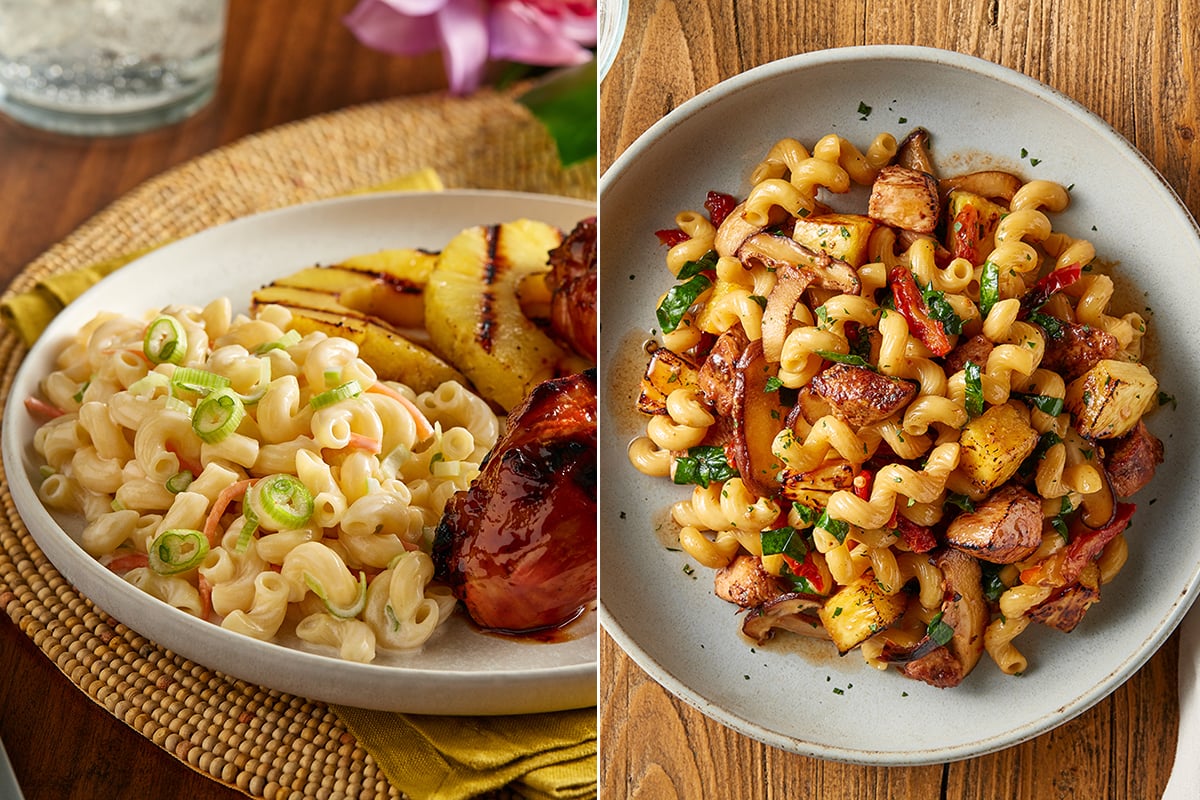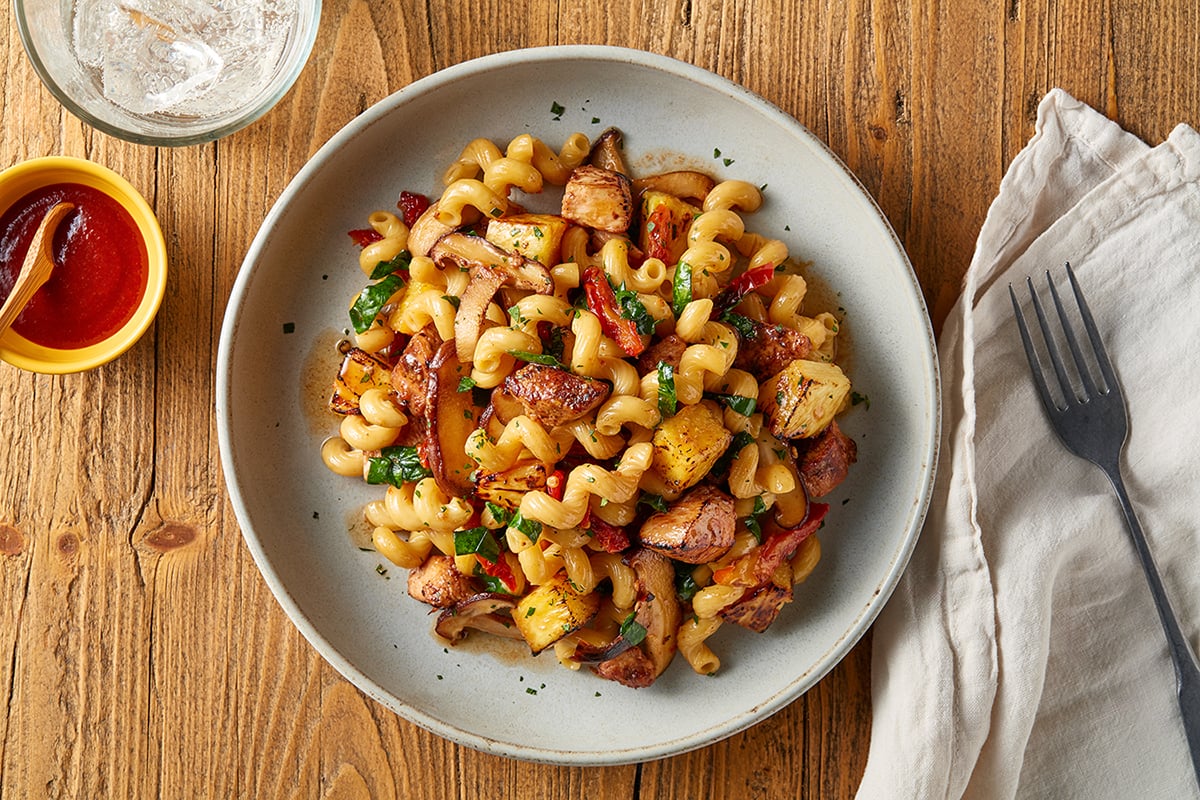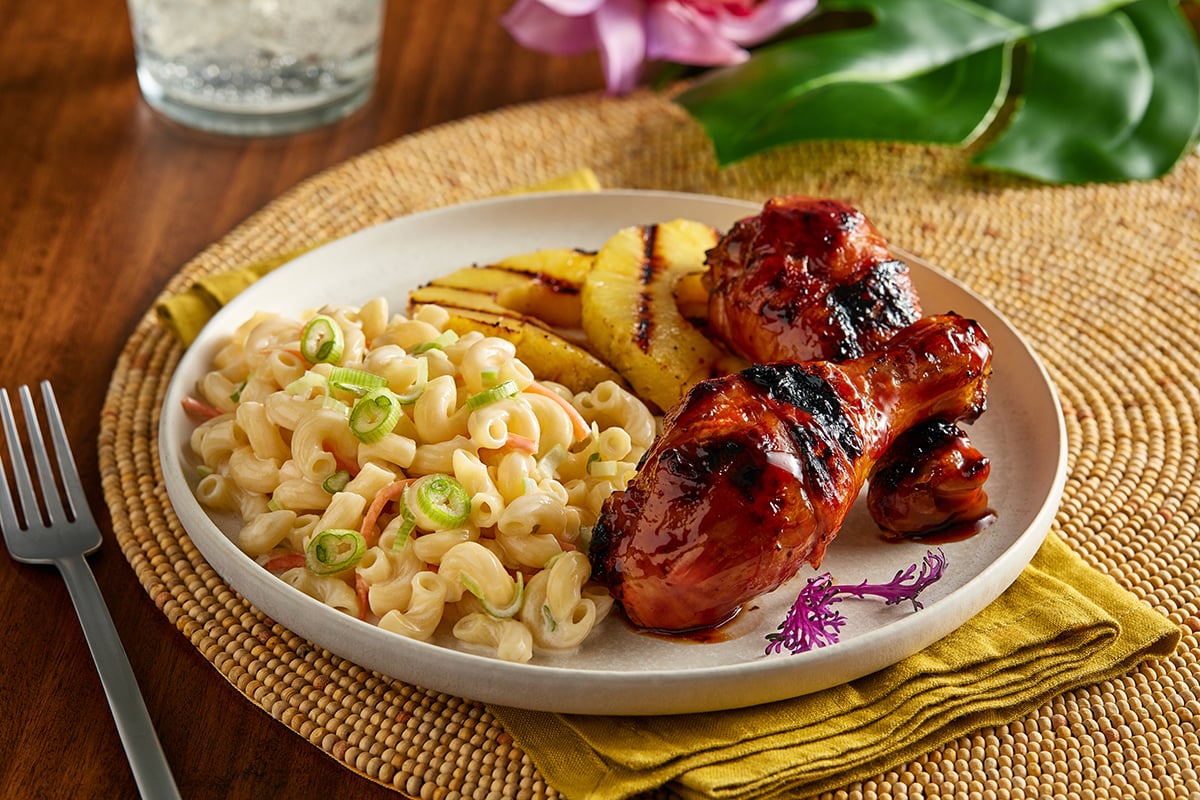
SPONSORED CONTENT
Two Fresh Takes on Hawaiian Comfort Classics
Chefs find menu success in the Hawaii-inspired trend
SPONSORED CONTENT
Two Fresh Takes on Hawaiian Comfort Classics
Chefs find menu success in the Hawaii-inspired trend
By Flavor & The Menu
April 9, 2024
By Flavor & The Menu
April 9, 2024
Hawaiian-inspired food and beverage is taking center stage on the mainland, offering huge opportunity for modern interpretation. This surge in popularity is not only a testament to the delicious flavors of Hawaiian cuisine but reflects a growing appreciation for the diverse cultural influences that shape it. We spoke with two chefs who find inspiration in two of the cuisine’s most iconic dishes. The first dish relies on pasta as a familiar, beloved format for innovation. The second is a classic pasta dish from the islands that is ready for broader adoption.
Huli Huli Chicken Pasta With Mushrooms, Sundried Tomatoes and Spinach

Hawaii’s huli huli chicken is closely associated with Ernest Morgado, who developed the recipe in the 1950s. The term “huli huli” means “turn turn” in Hawaiian, referring to the method of cooking the chicken by constantly turning it over a grill. Morgado came up with the idea of marinating chicken in a blend of soy sauce, ginger, garlic and other spices, then grilling it over an open flame while continuously rotating it to ensure even cooking and flavor distribution. This craveable combination of sweet and savory became a fixture in Hawaiian cuisine.
Today, huli huli is helping lead the charge in broader menu adoption of Hawaii-inspired foods. Its blend of pineapple juice, soy sauce, sesame oil, garlic and ginger, offers a fruity, savory, aromatic profile and plenty of runway for translation. Charles Kimball, Regional Executive Chef at Chartwells, menus a close-to traditional take in his Huli Huli Chicken Pasta with Mushrooms, Sundried Tomatoes and Spinach, first adding a bit of heat to give it a signature spin, then moving it into a pasta dish. To prepare the chicken, he dices it, and then marinates it in grated ginger, honey, garlic, ketchup, fresh pineapple and oil. Once grilled, he tosses the chicken pieces with Barilla Protein+® Pasta, red chile flakes, sautéed shiitakes, sun-dried tomato and the pineapple from the marinade. He adds pasta water and butter, then fresh spinach and parsley.
“You get a nice char on the chicken with huli huli, and the combo of sweet, savory and spicy is delicious,” says Kimball. “This kind of cuisine is fun to explore and has wide appeal. It’s family food, centered in culture and tradition.” He sources Barilla because of its second-to-none quality. “I love Barilla, it’s the best,” says Kimball. “Pasta is a great canvas for global flavor exploration—so crucial to menu development today.”
Hawaiian Mac Salad

Macaroni salad, affectionately dubbed “mac salad,” is a comfort-centric staple in Hawaii, frequently gracing the tables of plate lunches, barbecues and communal gatherings. Its roots intertwine with Hawaii’s rich cultural tapestry and the bygone plantation era of the late 19th and early 20th centuries. Laborers from various ethnic backgrounds, including Portuguese, Japanese, Filipino, Chinese and Korean, converged on Hawaii’s sugarcane and pineapple plantations, each bringing their distinctive culinary customs and ingredients. As these diverse influences melded within Hawaii’s culinary landscape, macaroni salad emerged as a melting pot mash-up.
Today, the pasta salad is finding favor on mainland menus, thanks to its craveable, comforting combination of pasta, mayonnaise, shaved carrot and salt and pepper. Iterations abound, including the addition of celery, potato and relish. Ed Glebus, Executive Chef at Thrive Cafe in Rancho Bernardo, California, menus a distinctive take. His Hawaiian Mac Salad is featured in a build-your-own salad bar serving a corporate dining clientele. He starts with Barilla Classic Elbow Pasta, combining it with mayo, white miso, rice wine vinegar, carrot and green onion. “Our guests gravitate to Hawaiian food. When we serve this at the salad bar, it’s usually the first item to go,” says Glebus. He sources Barilla, citing its consistency and quality. “Barilla Pasta holds up best. It always comes out consistent. The hold time is great and it absorbs flavors nicely in cold pasta dishes,” he says. “For this application, it’s important to cook the pasta completely—past al dente. While it’s hot, throw it on a sheet pan, hit it with canola oil, cool, and then chill. This method leaves the starch on the pasta and makes it more delicious.”
For more on-trend recipe inspiration and over 40 versatile pasta shapes/varieties, visit www.barillafs.com/recipes.







